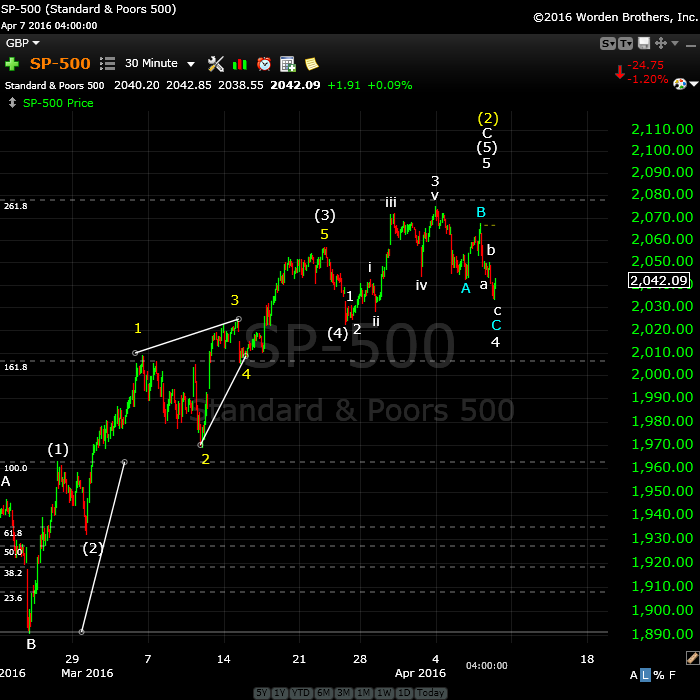December 29, 2013
 Offline
OfflineThe problem is that it’s not an ending diagonal and numbering of your waves is incorrect, as I mentioned previously. If it were an ending diagonal, it’s also incomplete.
Let’s see if we can clear up a bit what’s going on. This chart shows the C wave of the large corrective wave yellow (2). It should be in 5 waves and, in fact it is. We’re waiting for the final wave to hit the target (a new high).
The entire 5 waves are shown as white (1) – (5). Now wave (3) is 1.618 X wave 1, so that fulfills the fig length guideline. Within wave three, there are also 5 motive waves, the yellow 1-3 waves. The contentious issue could be the triangle I’m showing as the fourth wave overlaps with the first, but there is another perfectly acceptable way to label the waves that eliminates the triangle.
In any event, it ends the first set of waves at my white (3), which you’ve labelled wave c/1. However, it’s in 5 waves, so it can’t be part of an ending diagonal. I can’t see you labelling for the rest of wave 3, so that part’s up in the air.
A bullish ending diagonal has to have 3 waves touching the upper trendline and 2 touching the bottom, as well as a throw-over at the top. Your ending diagonal is missing the third touching wave and the throw-over, so at best, it’s incomplete.
I don’t show the end pattern as an ending diagonal and at the moment, it breaks no rules. I can’t get an ending diagonal to work without breaking EW rules, which is a problem.
Anyway, those are my thoughts on the SPX pattern as it stands now.
Most Users Ever Online: 75
Currently Online:
3 Guest(s)
Currently Browsing this Page:
1 Guest(s)
Top Posters:
houseflii: 19
Platy: 14
tedward728: 4
Lon Kaufmann: 2
Tamon Yamaguchi: 2
Newest Members:
Kandan Kumar
Stan Greville
Michelle Hay
Gudiyatham Padi
Rick Oliver
Forum Stats:
Groups: 5
Forums: 24
Topics: 106
Posts: 179
Member Stats:
Guest Posters: 1
Members: 1380
Moderators: 2
Admins: 1
Administrators: Peter Temple
Moderators: Whazzup, Chris Pearson

 Log In
Log In Home
Home











